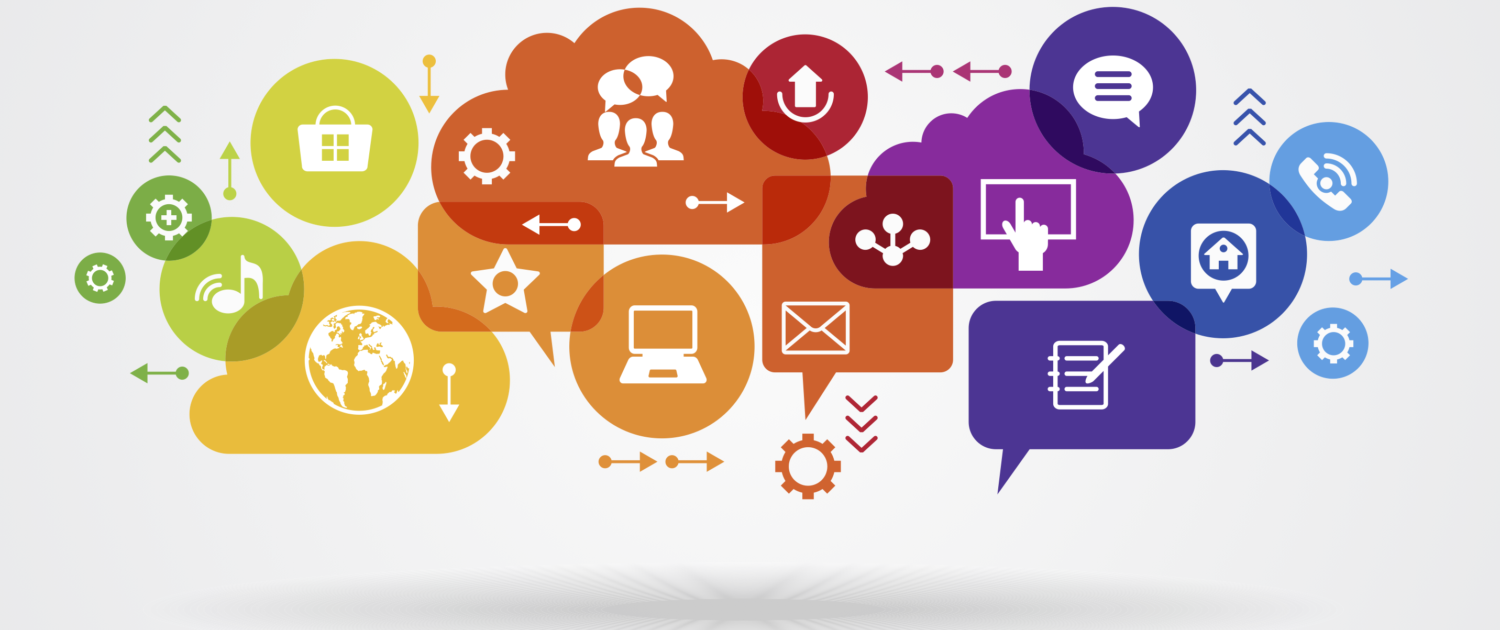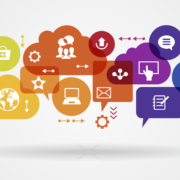
Professional selling is senior selling. It may be a seller-doer model, as in consulting, or an expert-driven sales model for high value products and services. Professional selling is not about directing a junior team of salespeople, it is about senior people doing the selling – establishing their personal brand, actively building a network and engaging both existing relationships and new prospects with thought leadership and insights.
Clearly, LinkedIn is an established resource for professional sales. It helps senior professionals find and engage with specific prospective clients or buyers with personal 1:1 interaction, establish professional credibility and share content and resources to nurture and develop prospects. It also offers paid options to build awareness and encourage lead conversions.
So how can senior professionals take advantage of LinkedIn? You can simplify it with three steps (and a few sub-steps). 1. Develop a strategy, 2. Establish the systems you need, 3. Execute your program(s).
Step 1. Begin with a Strategy.
This doesn’t need to take long, but as we all know … if you don’t know where you are going, any road will get you there.
Isolate your audience.
Who are you targeting? LinkedIn Sales Navigator offers rich search and segmentation opportunities allowing you to isolate your target audience based on a wide range of criteria. You might start by determining who is your ideal customer profile(s) for this particular offering. Consider regions, verticals, size company and of course specific titles. You may also be seeking to engage with specific companies or more broadly for functional roles. Build your list in LinkedIn for use in LinkedIn.
Craft your Message. Have something to say and say it well.
Next, you will want to craft your messaging for this particular audience or audiences. This is a good area to get help from a professional writer and social selling experts. There are also great tools to tailor the writing style to the audience. At this stage, you may not be producing the thought leadership assets themselves, but you are crafting the persuasive messages that should appeal to the target persona at the different stages of their buying lifecycle.
Use personas to define pain points and map messaging across each stage of the buyer journey. You are likely working at the top of the funnel in LinkedIn – building awareness and engagement using thought leadership or direct messaging. These key messages will help you better capture attention and reinforce your firm or your personal brand. Use engagement-focused rather than domain-focused messaging. Emphasize giving the audience value, not your pitch. At the same time, you may want to be direct and to the point, respecting your buyer’s time. Messaging can be used to build out a set of assets, including your core thought leadership asset (like a handbook, guide , e-book or white paper) and derivative assets (like blog posts, social posts and emails).
In a competitive environment, it can be difficult to gain traction with a buyer engagement program. Create the scripts and playbook for your messaging campaign using a “pain-empathy-insights” approach:
- Pain: Articulate focus on urgent, visible problems that the audience is eager to address
- Empathy: Demonstrate our understanding & appreciation of the key issues the audience is facing and lay the groundwork to becoming a trusted advisor
- Insights: Offer thought-leadership messaging and content that provides honest, objective consideration toward solving problems/pain – independent of our specific solution. This helps us earn the right to deepen engagement as a trusted advisor.
Think through the go-to-market strategy to access these buyers.
How are you going to engage this audience end-to-end? We are using linkedin, but what other channels make sense? What are the watering holes for these buyers?
Linkedin can serve as a primary resource to make connections, but you may also want to use other channels including other social platforms, slack, zoom, email and yes – phone calls! What aspects of LinkedIn should we use? Sponsored posts. Sponsored Inmail? 1:1 Engagement? Invitations.
Set some metrics. What constitutes success? I like to begin with some simple bottom up metrics based on what we are trying to accomplish with the program. For example if our goals are:
- 5-10 New Clients @100k each avg
- $500k+ Revenue Impact
- 6-12 Months
How does this translate into campaign metrics? What inquiries & sales leads will help us get there? To do this “funnel math”, you might start at the bottom of the funnel and work your way up.
- I want 5+ new clients over 6 – 12 months (averaging 100K revenue)
- That means 20 Qualified Opportunities @ 20% Conversion
- That means 100 Leads
- That requires = 300 engaged top-of-funnel Connects (or 25 per month)
Of course, the actual numbers will be different, but it is helpful to have a starting point and adjust as needed.
How will we do this? How will we access buyers? What is our engagement strategy to achieve these volumes? If paid media, what is our budget? The numbers may be wrong, but you can always adjust. Funnel Math is a good starting point.
Professionals should use only “White Hat” methods.
Some automation tools and scrapers can hack LinkedIn, but we do not support these tactics. We favor a “white hat” approach. Your reputation is important. These black hat automations may also lead to suspensions and LinkedIn profile bans. For professionals we suggest a high-touch and personalized approach to reaching out and messaging or a self-directed approach using content and paid media. If it sounds creepy, it probably is.
Map your engagement approach – at a high level. Your “Campaign Architecture”
Is this a program that I can outsource entirely, do all myself? What is the team mix?
Outline your sequence. What might a program look like and what channels?
- Which channels are most likely to succeed with this audience?
- What content supports the offer?
- What call-to-action?
- What conversion approach
- What follow-up process.
Define the channel and media mix.
- What Messaging & Sharing?
- Direct Emails (1st-level connections)
- LinkedIn Direct Messages / InMail (1st-level connections)
- Join Targeted Groups and share
- What Content?
- What Core Content Asset
- Blog Posts Series (e.g. for each chapter)
- Syndication on Social Media?
- LinkedIn Posts – General
- share professional expertise, experiences and anecdotes with connections and the larger community. These are broadcasted to your connections’ feeds on their LinkedIn homepage.
- Posts are limited to 1300 characters, or about five lines.
- share professional expertise, experiences and anecdotes with connections and the larger community. These are broadcasted to your connections’ feeds on their LinkedIn homepage.
- LinkedIn Articles:
- In-depth articles related to your professional expertise – challenges, opportunities, important trends, etc. Articles are limited to 125,000 characters. Share with LinkedIn groups
- Social Media Amplification – Twitter, Facebook
- LinkedIn Posts – General
- Paid Social?
- LinkedIn Advertising
- LinkedIn – Sponsored Content; Sponsored InMail
- Twitter – Twitter Ads; Sponsored Tweets
- Search Engine Marketing /PPC?
- AdWords
- Event Marketing?
- Webinar Guest
- Webinar Host
- Sponsored Conferences / Both
- Speaker Engagements
- PR, Media and Communications?
- Influencer Marketing
- PR, Media Placements
- Analyst Relations
Step 2. Get your infrastructure setup.
Ensure you have an effective personal brand presence and digital hub
Do you have a thought leadership platform? Is your profile solid and up to date? Personal branding matters. Professionals with strong personal brands have much higher chances to attract attention of C-level executives and generate sales-qualified leads. People are more likely to accept requests and start a dialogue with a seasoned professional.
If the recipient searches for you, what will they see? Is it what you want them to see? Are you also asking people to visit a webpage? Can you track this? Are you also adding a call-to-action (CTA) on that web page? A downloadable asset perhaps? Ensure your brand platform (website, social media profiles, marketplace presence, etc.) is setup for success.
To optimize your profile, focus on your LinkedIn and social media profile headline and summary. The headline does not need to be a job title, it can speak to the ideal target/buyer persona. Your summary can tell your story – avoid an online ‘resume’ set of capabilities.
Setup your technology: LinkedIn and Sales Navigator, website, blog, landing page funnel, email marketing
In this post we are talking about using LinkedIn marketing. LinkedIn can be the source of truth for accurate prospect date. The toolset for a campaign should include LinkedIn and perhaps Sales Navigator. Premium LinkedIn users can search on a range of parameters to build a list, including years of experience, function, seniority level, company size, and when they joined.
However, you may also have information in your CRM, a website, your blog, marketing automation and a customer data platform. Ideally, we want to marry up this “tech stack” so the elements all work together.
Agree roles and responsibilities. Who does what?
What are the roles and responsibilities – who does what and when? What elements can be managed by a marketing team or support staff and what elements does the professional need to do him or herself. Professional sales and buyer engagement require a personal commitment along with marketing and administrative support. Technology paves the way for an efficient process.
Step 3. Build execute your program.
Marketing Execution. Build, Test, Run. Like all lead gen it is a numbers game.
Create the database of ideal targets – Sales Navigator can be used along with other tools. Identify LinkedIn Groups for the target audience segment.
Build your core assets and derivative assets, e.g.:
- An eBook or White Paper?
- Blog Posts?
- Social Posts?
- Landing Page?
- Thank You Page?
- Meeting Scheduler?
Use effective graphics, media and imagery, colors and tone and build the landing page and calls-to-action to engage and foster conversions.
A simple outbound engagement sequence may look like:
- Outbound Message #1
- Personalized introduction message (short)
- Second message with Pain, Empathy, Insights, link to high-value educational content
- Third message – Optionally invite to an event or suggest a 1:1 meeting using a meeting link option
- Confirmation message
- Follow-on invite to an event/webinar
- Not ready? Add to nurture list
This could be combined with a paid social and retargeting to build recognition and brand impressions in the target account or audience.
Use a metrics-driven methodology
We discussed Funnel Math earlier in this post. For every 100 relevant requests, conversions and connections made, you might expect a yield of 20 qualified connections. For many B2B companies, that may enough for high-value program!
Measure the number of followers, impressions as an indicator of awareness. For account-based programs, measure the extent of visits from a brand IP address. You could measure the level of engagement by the number of messages you exchange. For lead gen, you can measure conversations that may start on LinkedIn (e.g. using your CTA and landing page, meeting link etc.) then convert into meetings and CRM tracking. Adjust your strategies.
Good luck, and good selling!




Leave a Reply
Want to join the discussion?Feel free to contribute!